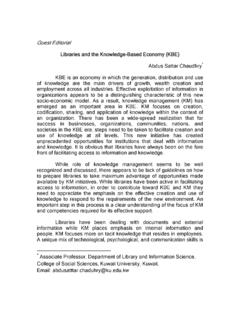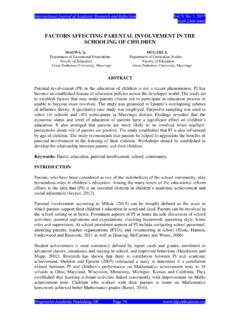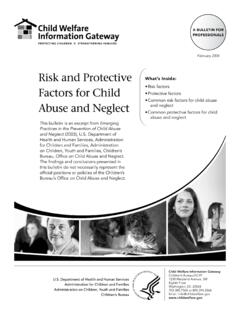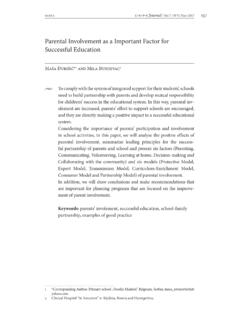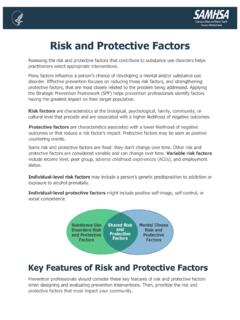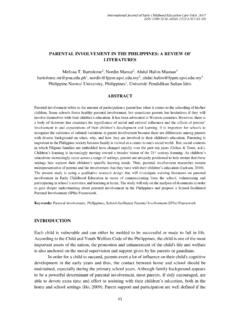Transcription of FACTORS AFFECTING STUDENTS’ QUALITY OF ACADEMIC ...
1 Journal of QUALITY and Technology Management Volume VII, Issue II, December, 2011, Page 01 14 FACTORS AFFECTING students QUALITY OF ACADEMIC PERFORMANCE: A CASE OF SECONDARY SCHOOL LEVEL Farooq1, Chaudhry1, M. Shafiq1, G. Berhanu21 University of the Punjab, Pakistan 2 University of Gothenburg, Sweden ABSTRACT This study was conducted to examine different FACTORS influencing the ACADEMIC performance of secondary school students in a metropolitan city of Pakistan. The respondents for this study were 10th grade students (300 male & 300 female). A survey was conducted by using a questionnaire for information gathering about different FACTORS relating to ACADEMIC performance of students . The ACADEMIC performance was gauged by the result of their 9th grade annual examination.
2 Standard t-test and ANOVA were applied to investigate the effect of different FACTORS on students achievement. The results of the study revealed that socio-economic status (SES) and parents education have a significant effect on students overall ACADEMIC achievement as well as achievement in the subjects of Mathematics and English. The high and average socio-economic level affects the performance more than the lower level. It is very interesting that parents education means more than their occupation in relation to their children s ACADEMIC performance at school. It was found that girls perform better than the male students . Keywords: QUALITY performance, achievement, socioeconomic status, demographic FACTORS , gender and ACADEMIC achievement.
3 INTRODUCTION In this era of globalization and technological revolution, education is considered as a first step for every human activity. It plays a vital role in the development of human capital and is linked with an individual s well-being and opportunities for better living (Battle & Lewis, 2002). It ensures the acquisition of knowledge and skills that enable individuals to increase their productivity and improve their QUALITY of life. This increase in productivity also leads towards new sources of earning which enhances the economic growth of a country (Saxton, 2000). The QUALITY of FACTORS AFFECTING students QUALITY of ACADEMIC Performance: A Case of Secondary School Level 2| students performance remains at top priority for educators.
4 It is meant for making a difference locally, regionally, nationally and globally. Educators, trainers, and researchers have long been interested in exploring variables contributing effectively for QUALITY of performance of learners. These variables are inside and outside school that affect students QUALITY of ACADEMIC achievement. These FACTORS may be termed as student FACTORS , family FACTORS , school FACTORS and peer FACTORS (Crosnoe, Johnson & Elder, 2004). The formal investigation about the role of these demographic FACTORS rooted back in 17th century (Mann, 1985). Generally these FACTORS include age, gender, geographical belongingness, ethnicity, marital status, socioeconomic status (SES), parents education level, parental profession, language, income and religious affiliations.
5 These are usually discussed under the umbrella of demography (Ballatine, 1993). In a broader context demography is referred to as a way to explore the nature and effects of demographic variables in the biological and social context. Unfortunately, defining and measuring the QUALITY of education is not a simple issue and the complexity of this process increases due to the changing values of QUALITY attributes associated with the different stakeholders view point (Blevins, 2009; Parri, 2006). Besides other FACTORS , socioeconomic status is one of the most researched and debated factor among educational professionals that contribute towards the ACADEMIC performance of students .
6 The most prevalent argument is that the socioeconomic status of learners affects the QUALITY of their ACADEMIC performance. Most of the experts argue that the low socioeconomic status has negative effect on the ACADEMIC performance of students because the basic needs of students remain unfulfilled and hence they do not perform better academically (Adams, 1996). The low socioeconomic status causes environmental deficiencies which results in low self esteem of students (US Department of education , 2003). More specifically, this study aims to identify and analyze FACTORS that affect the QUALITY of students ACADEMIC performance. REVIEW OF LITERATURE Educational services are often not tangible and are difficult to measure because they result in the form of transformation of knowledge, life skills and behaviour modifications of learners (Tsinidou, Gerogiannis, & Fitsilis, 2010).
7 So there is no commonly agreed upon definition of QUALITY that is applied to education field. The definition of QUALITY of education Journal of QUALITY and Technology Management |3 varies from culture to culture (Michael, 1998). The environment and the personal characteristics of learners play an important role in their ACADEMIC success. The school personnel, members of the families and communities provide help and support to students for the QUALITY of their ACADEMIC performance. This social assistance has a crucial role for the accomplishment of performance goals of students at school (Goddard, 2003). Besides the social structure, parents involvement in their child s education increases the rate of ACADEMIC success of their child (Furstenberg & Hughes, 1995).
8 The relationship between gender and the ACADEMIC achievement of students has been discussed for decades (Eitle, 2005). A gap between the achievement of boys and girls has been found, with girls showing better performance than boys in certain instances (Chambers & Schreiber, 2004). Gender, ethnicity, and father s occupation are significant contributors to student achievement (McCoy, 2005; Peng & Hall, 1995). Above and beyond the other demographic FACTORS , the effects of SES are still prevalent at the individual level (Capraro, M., Capraro, R., & Wiggins, 2000). The SES can be deliberated in a number of different ways; it is most often calculated by looking at parental education , occupation, income, and facilities used by individuals separately or collectively.
9 parental education and family SES level have positive correlations with the student s QUALITY of achievement (Caldas & Bankston, 1997; Jeynes, 2002; Parelius, D., & Parelius, A., 1987; Mitchell & Collom, 2001; Ma & Klinger, 2000). The students with high level of SES perform better than the middle class students and the middle class students perform better than the students with low level of SES (Garzon, 2006; Kahlenberg, 2006; Kirkup, 2008). The achievement of students is negatively correlated with the low SES level of parents because it hinders the individual in gaining access to sources and resources of learning (Duke, 2000; Eamon, 2005; Lopez, 1995). Low SES level strongly affects the achievement of students , dragging them down to a lower level (Sander, 2001).
10 This effect is most visible at the post-secondary level (Trusty, 2000). It is also observed that the economically disadvantaged parents are less able to afford the cost of education of their children at higher levels and consequently they do not work at their fullest potential (Rouse & Barrow, 2006). FACTORS AFFECTING students QUALITY of ACADEMIC Performance: A Case of Secondary School Level 4| Krashen (2005) concluded that students whose parents are educated score higher on standardized tests than those whose parents were not educated. Educated parents can better communicate with their children regarding the school work, activities and the information being taught at school. They can better assist their children in their work and participate at school (Fantuzzo & Tighe, 2000; Trusty, 1999).



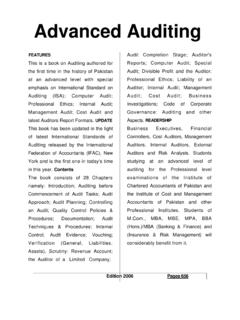

![nÁ0` h]´ VP h^ÄE°h´ÅÊQ⌦µh^˨½ DÅ⌦En¨½ À¹ ÌÄjÅ⌦ÊPÅj {´Ì](/cache/preview/7/8/7/0/6/2/b/7/thumb-787062b7e87e0e8e4ae0396a2098f16c.jpg)

